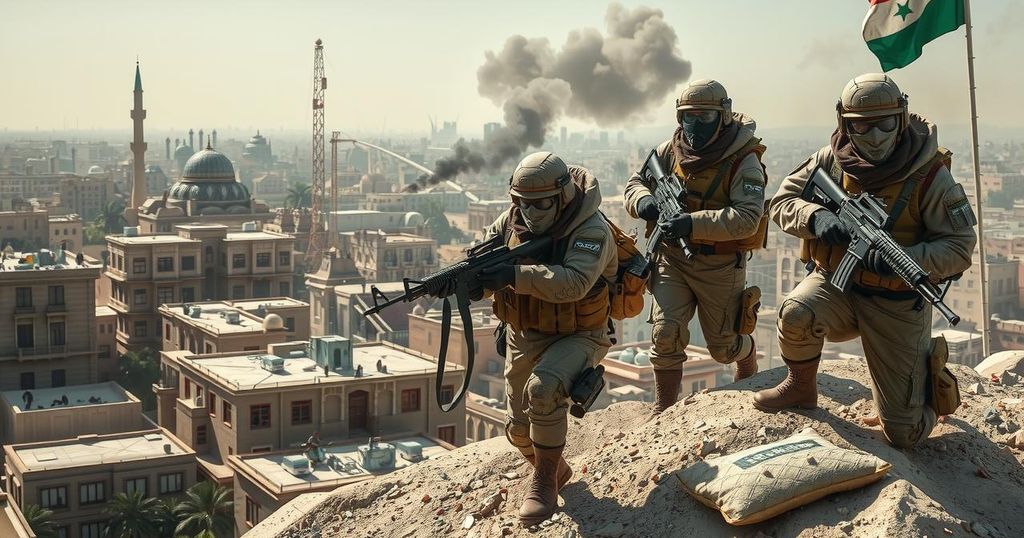Understanding the Syrian Rebels Capturing Damascus
The Syrian rebels leading the charge towards Damascus consist mainly of Hayat Tahrir al-Sham (HTS) and the Turkish-backed Syrian National Army. The HTS, founded by Abu Muhammad al-Jolani, emerged from previous insurgent movements and has secured dominance in the rebel faction landscape despite being designated a terrorist group by the U.S. Human rights violations persist in areas under its control, while Turkish motivations pose further complexities to the conflict.
The Syrian rebels who have advanced into Damascus are primarily composed of the Islamist alliance Hayat Tahrir al-Sham (HTS) and the Turkish-backed Syrian National Army. These groups, which have maintained strongholds in northwestern Syria, commenced a surprise offensive on November 27. Their assault led to the capture of Aleppo, Syria’s largest city, and Hama, its fourth largest. HTS, founded by the former insurgent Abu Muhammad al-Jolani, emerged from an earlier faction that allied with al-Qaeda but distanced itself from the group in 2016, rebranding itself in the process. As the most dominant rebel faction in Syria today, HTS is classified as a terrorist organization by the United States, with serious concerns regarding human rights violations within its controlled territories, including execution of individuals accused of supporting rival parties, and allegations of blasphemy and adultery. Although HTS and the Syrian National Army have collaborated at times, their objectives can often diverge, particularly regarding the management of Turkish interests, as Turkey seeks to prevent Kurdish militant influence near its borders. Turkey has historically supported these rebel factions but has increasingly encouraged peaceful negotiations, denying any role in the recent offensive.
The ongoing conflict in Syria has witnessed the rise of various rebel factions since its onset in 2011. Among these, Hayat Tahrir al-Sham has emerged as a major Islamist group with deep roots in previous resistance movements against the Syrian regime and foreign occupiers. The Turkish-backed Syrian National Army operates under a similar framework, seeking to establish control while addressing both regional security concerns and internal dissension among various factions. The intricate dynamics among these groups, as well as their shifting alliances and objectives, reflect a complex landscape of the Syrian civil war that has drawn in numerous international stakeholders.
In conclusion, the Syrian rebels advancing towards Damascus, primarily led by Hayat Tahrir al-Sham and the Syrian National Army, represent a significant force in the ongoing conflict. As HTS continues to assert dominance over rival factions, the situation remains precarious, marked by a history of violence and oppression. The delicate balance of power, influenced by both local and international interests, underscores the necessity for strategic diplomatic efforts to stabilize the region moving forward.
Original Source: www.theguardian.com




Post Comment